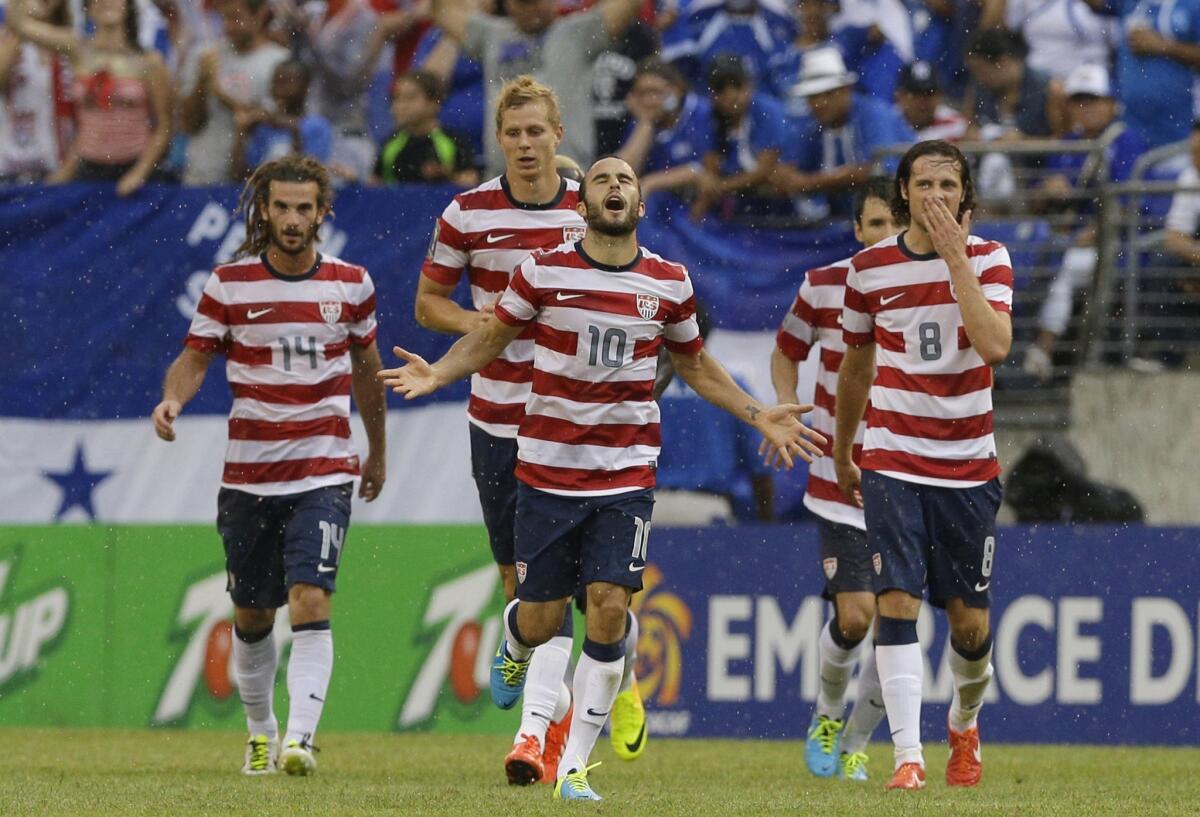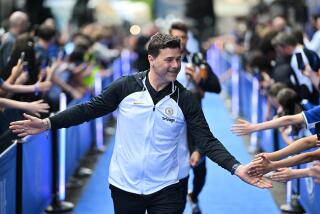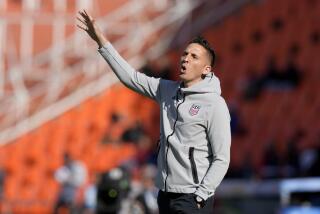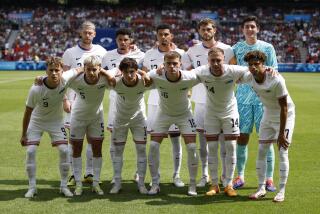Bad bounce could hurt U.S. in World Cup draw

- Share via
After more than three years of preparation and the most successful season in U.S. national soccer team history, how far the U.S. goes in next summer’s World Cup in Brazil may come down to which way a ping-pong ball bounces.
That’s because the draw for the 32-team tournament, which takes place Friday morning (8:30 a.m. PST on ESPN2 and Univision) at the Brazilian beachfront resort of Costa do Sauipe, will determine not only whom the U.S. will face in the opening round, but which team it is likely to play if it advances.
Think Selection Sunday with a samba.
The draw will produce eight groups, each with four teams. Every nation plays three games in a round-robin format in the opening round, with the top two teams in each group advancing to the knockout stage.
But unlike the NCAA basketball tournament, in which all 68 teams are seeded, FIFA ranks only eight countries. Which opening-round groups the other 24 nations wind up in is based on geography and the order in which ping-pong balls — each representing a country — are drawn from four pots.
As a result, some of the opening-round groups will look ridiculously easy while others will appear stacked, a luck of the draw U.S. Coach Juergen Klinsmann criticized this fall.
“The consequence is that you will have a couple of groups getting drawn … that are Groups of Death, that will be killer groups; there’s not even one easy team or whatever,” said Klinsmann, whose team won a record 16 games in 2013, won the CONCACAF Gold Cup and finished first in the CONCACAF World Cup qualifying tournament. “Then you will find maybe two or three groups that are much easier.
“It’s unbalanced now with that seeding procedure and it will cause a lot of question marks, a lot of discussion and debate once the groups are finalized. It is what it is, but I’m not very happy with it.”
FIFA arranged the pots based on geography to prevent teams from the same region — the U.S. and Mexico, for instance — from playing each other in the opening round. That hurts the U.S. more than any other country, though, because six of the eight World Cup teams ranked 31st or higher in the world are in the same pot with the 14th-ranked Americans and can’t be drawn into the same first-round group.
The best-case scenario for the Americans would be a group made up of Switzerland, on paper the weakest of the seeded teams, plus Algeria and either Croatia or Bosnia-Herzegovina, a World Cup newcomer. Of those teams, only Switzerland is listed ahead of the U.S. in FIFA’s world rankings.
For the U.S. a nightmare draw would be to land in a group with Spain or Brazil, plus the Netherlands and Ghana. Spain is the defending champion, and Brazil, the host country, hasn’t lost a competitive match at home since 1975. The Netherlands, the 2010 runner-up, was 9-0-1 in qualifying and Ghana eliminated the U.S. in the last two World Cups.
Of those countries, only Ghana ranks outside the global top 10.
In addition to determining whom the U.S. will play, the draw will also determine where and when those matches will take place. And given Brazil’s massive size — it is the largest contiguous country to play host to a World Cup — travel plans are no small matter.
The team that plays Brazil in the tournament opener June 12 in Sao Paulo, for example, will have to travel more than 2,400 miles to Manaus in the Amazon for its second match before playing its final group game in the Atlantic port city of Recife. If that team turns out to be the U.S., which plans to return to its training facility in Sao Paulo between matches, that draw would mean more than 8,000 miles of travel in 11 days.
The U.S. bused to all four of its matches in the 2010 World Cup in South Africa, and none of the trips were farther than 75 miles.
The bounce of a ping-pong ball will also send some teams to games in cool southern cities and others to midday games in the hot and humid northeast. With the 2014 World Cup field among the strongest ever, travel and weather could play a big factor in determining who leaves early and who gets to stick around awhile.
[email protected]Twitter: @kbaxter11







